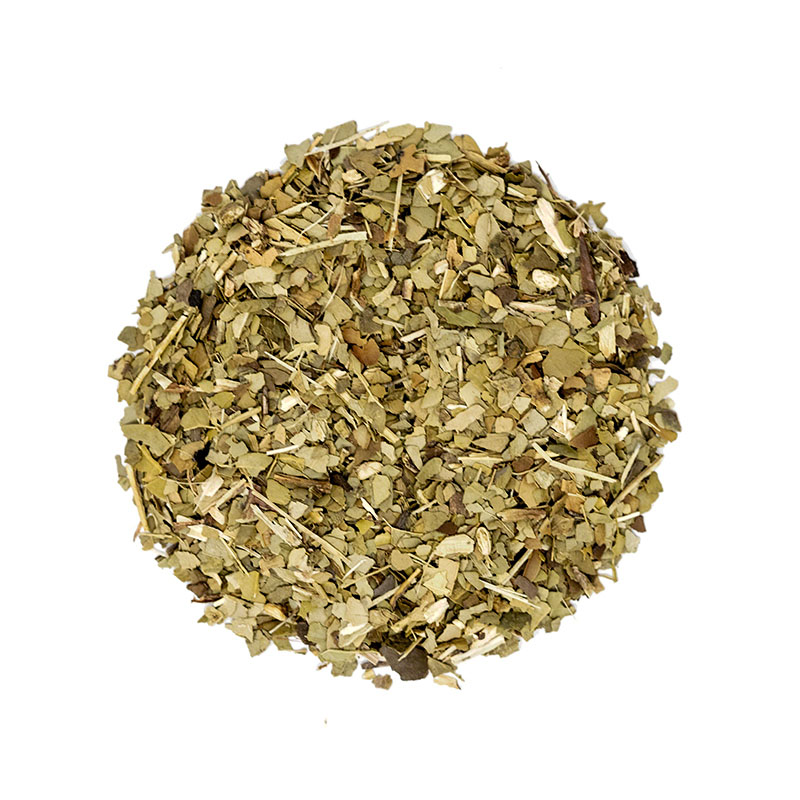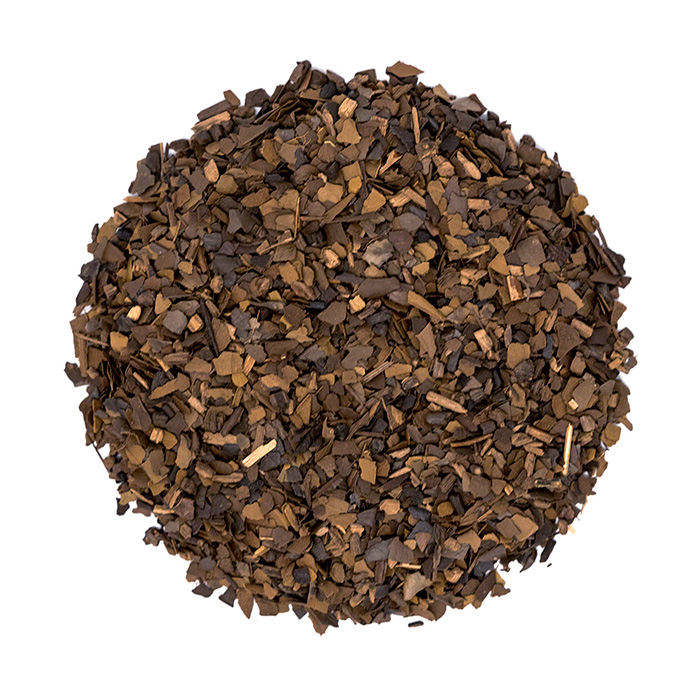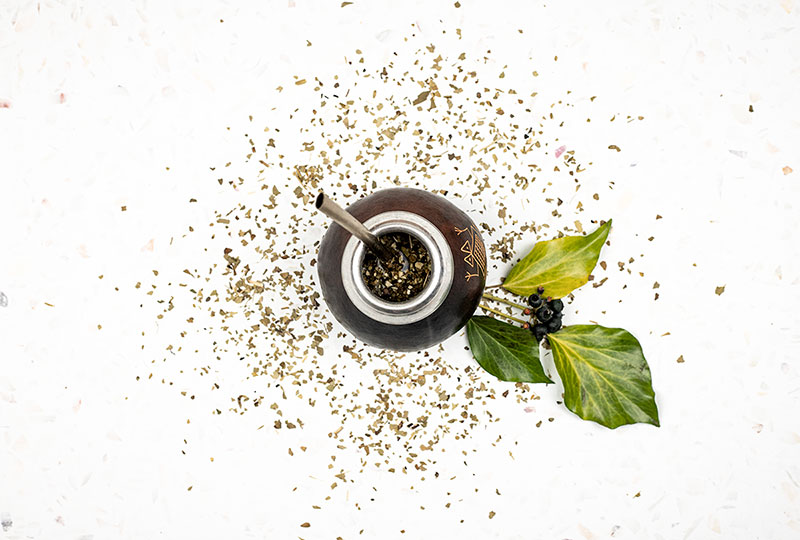Yerba Mate Tea Guide
Green Yerba Mate may be an acquired taste, but there’s no doubt it comes with a myriad of health benefits. If you don’t like the flavor of this South American tea, there’s good news – roasted type is available too. From chimarrão to mate cocido, there is a perfect mate drink for everyone. Learn more about this unique traditional drink, how to brew it, and what are the potential health benefits.
What is yerba mate?
Yerba mate or Ilex paraguariensis is a plant native to South America. It grows in Brazil, Argentina, Uruguay and Paraguay and it’s used for making caffeinated herbal tea. In many South American countries, mate is more than just a caffeinated drink. It’s a traditional beverage with a high cultural and social importance. It’s drank through the year, even on the hottest of summer days. Yerba mate has a long history. Although outside South America it’s still not as widely known as Camellia sinensis tea, it has been used for centuries, both for its health benefits and in social occasions.
There are three different types of pure yerba mate tea. Flavored blends are available too, and they may be a wonderful choice if you want to enjoy the benefits or want a caffeinated drink, but don’t enjoy the flavor of pure mate tea.
Dried green yerba mate powder
The most common type of mate in South America is green, dried yerba mate “powder”. This powder is not as fine as matcha green tea powder and usually contains both yerba mate leaves and twigs. When steeped, it won’t dissolve like matcha tea powder. It can be brewed with both hot and cold water. Powdered yerba mate has an intense flavor, it’s prepared using a special yerba mate guard and drank through a straw called bombilla. It’s not widely available outside South America.
Dried green yerba mate loose leaf tea
Second type of mate tea is green and dried yerba mate. Leaves resemble little flakes and are usually brewed with hot water. This type is very common in Western countries. It’s used for making different yerba mate blends and has a lighter flavor. Loose leaf yerba mate can be steeped in a regular teapot or using a regular tea infuser.

Green Yerba mate tea
Dried roasted yerba mate loose leaf tea
The third type is the roasted yerba mate. Leaves are dark brown and it’s made by roasting dried green yerba mate loose leaf tea. Roasted yerba mate is highly aromatic, but has a lighter, usually very appealing flavor, especially if you don’t like the taste of regular yerba mate tea.

Roasted yerba mate tea
There are 4 different yerba mate drinks:
- chimarrão – made with dried and powdered green yerba mate and hot water
- maté cocido – made with roasted yerba mate leaves
- tererê – made with powdered green yerba mate and cold water
- maté – made with green yerba mate leaves[1]
What does yerba mate tea taste like?
Yerba mate has a very unique flavor. It doesn’t taste like any other herbal tea. It has a strong, herbaceous flavor with grassy and earthy notes and sometimes a lot of bitterness. Dried green loose leaf yerba mate is likely to be less grassy and more sweet. On the other hand, roasted type has a more delicate flavor with pronounced roasted notes and no bitterness at all. If you like roasted oolong teas or Japanese hojicha roasted tea, you might like roasted mate loose leaf tea even if you don’t enjoy the flavor of green mate. This type is great for making iced tea and cold brewing and incredibly refreshing in summer.
How to Brew Yerba Mate
Different preparation methods are used for different yerba mate teas. Powdered yerba mate tea is traditionally made in calabaza, a hollow calabash gourd and drank through bombilla, a metal straw made from silver or stainless steel. Today, there are other types of calabaza available too. Some are made from wood, and some from ceramics or glass. You should never wash the traditional mate gourd with detergents or using a dishwasher.
When preparing mate tea in a gourd, the same powder is re-steeped several times, until it loses flavor. Gourd is filed 2/3 full with tea. The first infusion is made with cold water and discarded. Loose leaf mate tea is usually brewed using a teapot or an infuser. It’s available in tea bags as well. Yerba mate powder can be re-steeped numerous times, but loose leaf tea will usually give around 3 infusions.
Although yerba mate is a herbal tea, never brew it with boiling water. The water temperature should be around 158-171°F. Use a slightly hotter water for roasted mate. You can drink yerba mate with milk too, add a sweetener or make a proper latte.
Caffeine Content
Yerba mate plant is one of rare plants used for making herbal infusions that contain caffeine. Others are guayusa and yaupon, with first one likely to have more caffeine than yerba mate, and yaupon having considerably less.
The amount of caffeine in a cup of yerba mate tea will depend on the type of tea you are using and the way you brew it. Studies showed that 500 ml of mate infusion made with dried and powdered green yerba mate and hot water has about 135 mg of caffeine. This is considerably more than Camellia sinensis black tea, and even more than some types of coffee. The same type of yerba mate made with cold water will have about 85 mg of caffeine. However, tea made with roasted tea leaves will have only around 13 mg of caffeine per cup (182ml)[2].
Therefore, if you want to get the most caffeine from yerba mate, opt for dried and powdered green type. For example, Indian Assam tea in tea bags may brew into a cup that’s 2 or 3 times higher in caffeine than unbroken loose leaf Assam tea. That’s because smaller particles are likely to release more caffeine than unbroken loose leaf tea. Next, traditional yerba mate drink is prepared using a lot of mate powder.
Benefits of drinking yerba mate
Drinking yerba mate may provide numerous health benefit. It contains antioxidants, caffeine, saponins and other compounds. Studies suggest that it may provide hypocholesterolemic and hepatoprotective benefits, act as a central nervous system stimulant and diuretic, provide benefits for cardiovascular system, improve immune function and help with weight loss[3].
Studies suggest that yerba mate may be great for boosting immune system as it has a high antioxidant activity and reduce oxidative stress[4]. It’s very popular as a weight loss aid. Research says mate has a strong anti-obesity properties and may help reduce waist size and decrease body fat without adverse effects[5]. Combined with prolonged exercise, it may help to improve mood and satiety[6]. Because of caffeine content, it may help boost mood and reduce fatigue, but it may also help with depression, attention disorders and mood disorders and even Parkinson’s disease[7]. Yerba mate has chemopreventive properties too, and could potentially help with cancer prevention[8].
Although considered safe and consumed for centuries, there may be some side effects of yerba mate tea too. Scientics suggest that the cause of higher esophagus cancer rates in South America could be drinking very hot yerba mate tea – chimarrão. Chimarrão is a type of drink made using hot water and mate powder and drank from the gourd while the tea is still very hot. Chimarrão is usually made with very hot water at around 180-185°F and drank immediately.
Disclaimer: This article is for informational purposes only. It’s not intended to replace medical advice, diagnosis or treatment. Every person is different and may react to different herbs and teas differently. Never use teas or herbs to treat serious medical conditions on your own. Always seek professional medical advice before choosing home remedies.
References:
[1] https://www.researchgate.net/publication/284040962_Yerba_mate_Pharmacological_Properties_Research_and_Biotechnology
[2] http://www.latamjpharm.org/trabajos/24/1/LAJOP_24_1_2_5_8KBZFG0I38.pdf
[3] https://pubmed.ncbi.nlm.nih.gov/18034743/
[4] https://scielo.conicyt.cl/scielo.php?script=sci_arttext&pid=S0718-58392019000200316
[5] https://www.ncbi.nlm.nih.gov/pmc/articles/PMC4583719/
[6] https://www.ncbi.nlm.nih.gov/pmc/articles/PMC5579675/
[7] https://www.researchgate.net/publication/284040962_Yerba_mate_Pharmacological_Properties_Research_and_Biotechnology
[8] https://www.researchgate.net/publication/284040962_Yerba_mate_Pharmacological_Properties_Research_and_Biotechnology



